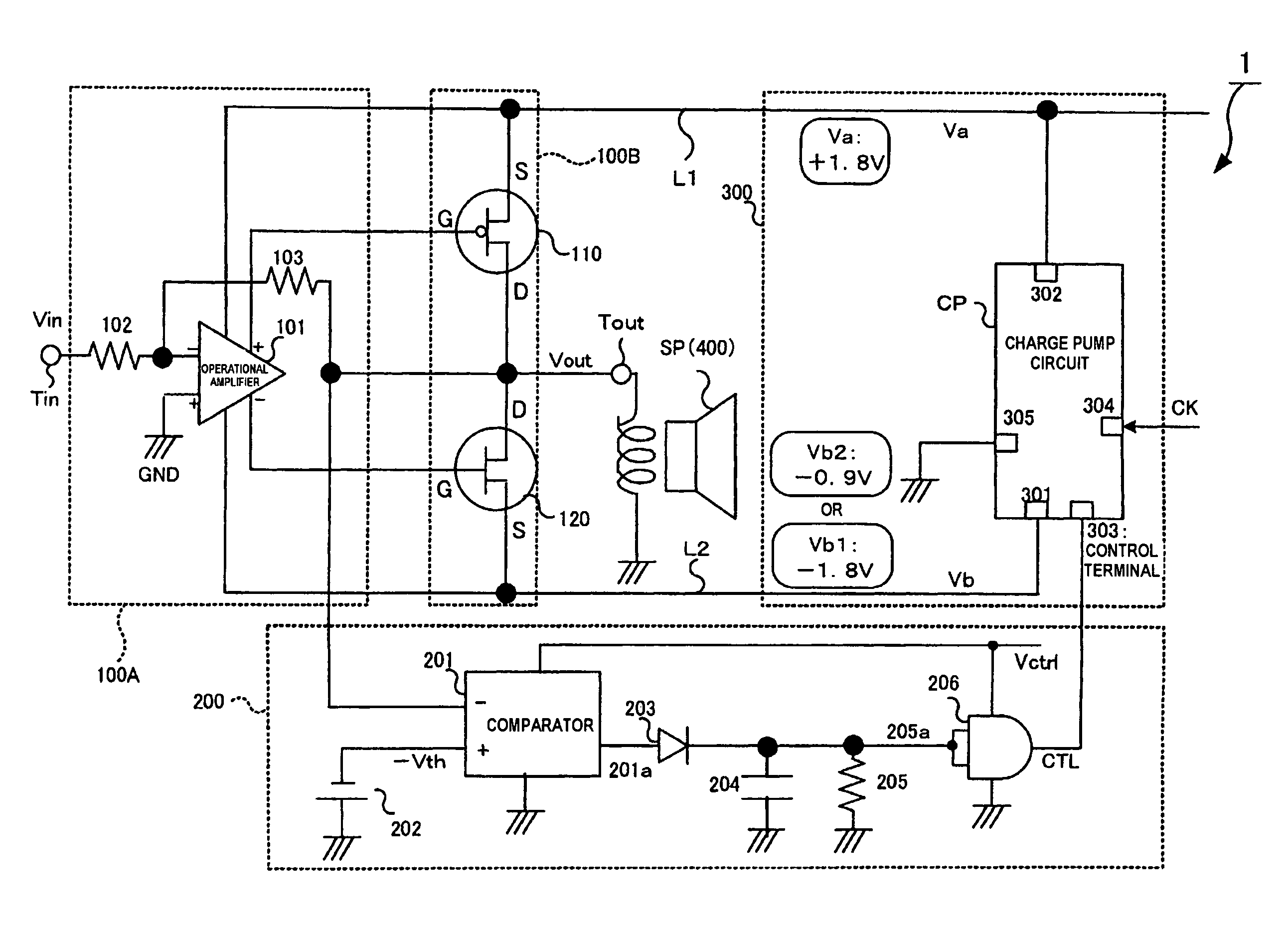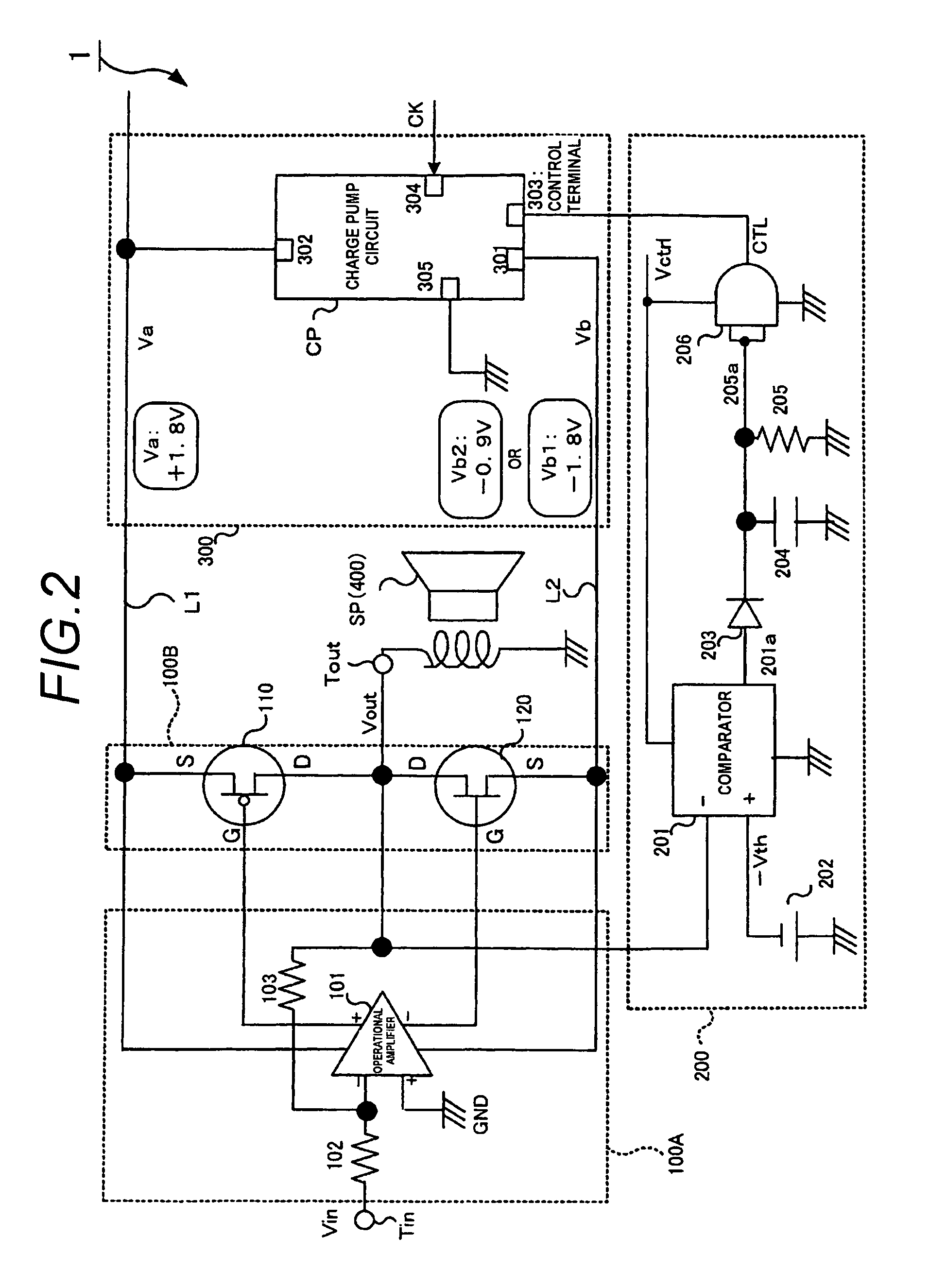Amplifying apparatus
a technology of amplifiers and amplifiers, applied in the direction of amplifiers with semiconductor devices only, amplifiers with semiconductor devices, amplifiers, etc., can solve the problems of affecting the improvement of power efficiency, difficult to obtain excellent linearity, and high saturation voltage of output transistors, so as to improve linearity and low gate-source voltage , the effect of low power supply use efficiency
- Summary
- Abstract
- Description
- Claims
- Application Information
AI Technical Summary
Benefits of technology
Problems solved by technology
Method used
Image
Examples
Embodiment Construction
[0033]An embodiment of the invention will be described with reference to the drawings. FIG. 1 is a conceptual block diagram conceptually showing the whole configuration of an amplifying apparatus 1 of the embodiment, and FIG. 2 is a block diagram schematically showing the detailed configuration of the amplifying apparatus 1 of the embodiment.
[0034]As shown in FIG. 1, the amplifying apparatus 1 of the embodiment includes: an amplifying section 100A which voltage-amplifies an input signal Vin, and which outputs the amplified signal; an outputting section 100B which current-amplifies the output of the amplifying section 100A, and which supplies an output signal Vout to a load 400; a high-potential power supply line L1 through which a high voltage Va is supplied; a low-potential power supply line L2 through which a low voltage Vb is supplied; and a power supply 300 which supplies the high voltage Va and the low voltage Vb to the amplifying section 100A and the outputting section 100B. I...
PUM
 Login to View More
Login to View More Abstract
Description
Claims
Application Information
 Login to View More
Login to View More - R&D
- Intellectual Property
- Life Sciences
- Materials
- Tech Scout
- Unparalleled Data Quality
- Higher Quality Content
- 60% Fewer Hallucinations
Browse by: Latest US Patents, China's latest patents, Technical Efficacy Thesaurus, Application Domain, Technology Topic, Popular Technical Reports.
© 2025 PatSnap. All rights reserved.Legal|Privacy policy|Modern Slavery Act Transparency Statement|Sitemap|About US| Contact US: help@patsnap.com



